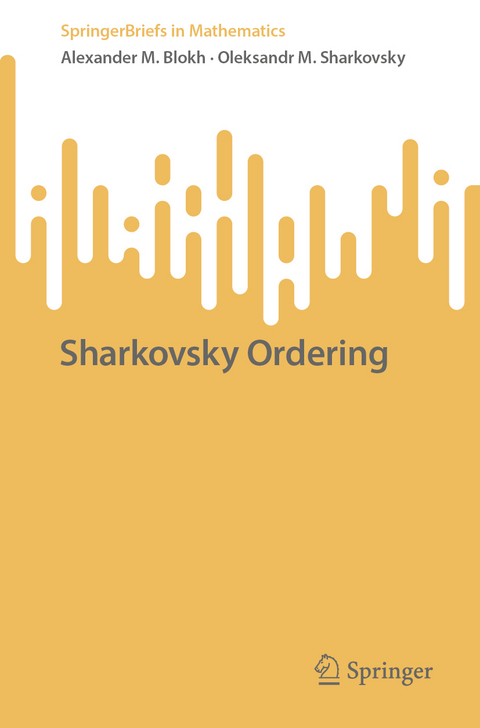
Sharkovsky Ordering
Springer International Publishing (Verlag)
978-3-030-99123-4 (ISBN)
This book provides a comprehensive survey of the Sharkovsky ordering, its different aspects and its role in dynamical systems theory and applications. It addresses the coexistence of cycles for continuous interval maps and one-dimensional spaces, combinatorial dynamics on the interval and multidimensional dynamical systems. Also featured is a short chapter of personal remarks by O.M. Sharkovsky on the history of the Sharkovsky ordering, the discovery of which almost 60 years ago led to the inception of combinatorial dynamics. Now one of cornerstones of dynamics, bifurcation theory and chaos theory, the Sharkovsky ordering is an important tool for the investigation of dynamical processes in nature. Assuming only a basic mathematical background, the book will appeal to students, researchers and anyone who is interested in the subject.
lt;p>Alexander M. Blokh is a Full Professor at the Department of Mathematics at the University of Alabama at Birmingham, AL, USA and the Director of the Math Department Outreach Program. He mostly does research in dynamical systems, but he is also interested in (mainly planar) topology, and in beautiful results and surprising discoveries in general.
Oleksandr M. Sharkovsky, DSc. is the Head of the Department of Dynamical Systems Theory of the Institute of Mathematics at the National Academy of Sciences of Ukraine in Kiev. His research fields include dynamical systems, differential and difference equations, mathematical physics and topology. He is best known for the discovery of the Sharkovsky ordering.
Preface.- 1 Coexistence of Cycles for Continuous Interval Maps.- 2 Combinatorial Dynamics on the Interval.- 3 Coexistence of Cycles for One-dimensional Spaces.- 4 Multidimensional Dynamical Systems.- 5 Historical Remarks.- 6 Appendix.
"This short book describes the role of Sharkovsky ordering in the theory of dynamical systems, and in particular the way Sharkovsky's work opened the field of combinatorial dynamics. ... A highlight of the book is a short chapter at the end written by Sharkovsky that describes how his results developed, how they contradicted common opinions of the time that one-dimensional mappings were simple, could be easily understood ... ." (Bill Satzer, MAA Reviews, March 30, 2024)
"It is brief but develops the theory carefully and with motivation. It also includes an account of the history of the results and some of the context and later developments by the second author. It will be useful as an introduction to low-dimensional dynamics and combinatorial dynamics, and would be suitable for students." (Thomas B. Ward, zbMATH 1505.37001, 2023)
“It is brief but develops the theory carefully and with motivation. It also includes an account of the history of the results and some of the context and later developments by the second author. It will be useful as an introduction to low-dimensional dynamics and combinatorial dynamics, and would be suitable for students.” (Thomas B. Ward, zbMATH 1505.37001, 2023)
| Erscheinungsdatum | 07.09.2022 |
|---|---|
| Reihe/Serie | SpringerBriefs in Mathematics |
| Zusatzinfo | VIII, 109 p. 17 illus., 4 illus. in color. |
| Verlagsort | Cham |
| Sprache | englisch |
| Maße | 155 x 235 mm |
| Gewicht | 195 g |
| Themenwelt | Mathematik / Informatik ► Informatik ► Theorie / Studium |
| Schlagworte | Bifurcation Theory • chaos theory • Coexistence of Cycles • Combinatorial Dynamics • Continuous Interval Maps • Cycle • Dynamical Systems • Multidimansional Dynamical Systems • Sharkovsky Ordering • Topological Dynamics • topological entropy |
| ISBN-10 | 3-030-99123-7 / 3030991237 |
| ISBN-13 | 978-3-030-99123-4 / 9783030991234 |
| Zustand | Neuware |
| Informationen gemäß Produktsicherheitsverordnung (GPSR) | |
| Haben Sie eine Frage zum Produkt? |
aus dem Bereich


